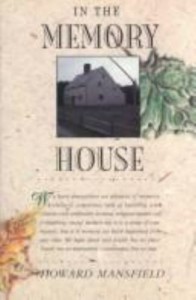What we remember and how we remember it continue to puzzle me. Sometimes a random, quite trivial moment remains vivid decades later while critical events are somehow lost. And then, as a memoir writer, the accuracy of my memories matters to me.
Oliver Sacks said:
We now know that memories are not fixed or frozen, like Proust’s jars of preserves in a larder, but are transformed, disassembled, reassembled, and recategorized with every act of recollection.
I find this idea exciting and horrifying. My writing is sometimes like an archeological dig: unearthing memories followed by research to verify them as much as possible. Sometimes it is more like a circus clown’s act: pulling a handkerchief from my sleeve only to find it attached to another one, which when pulled out is attached to yet another, and so on.
But if every time I pull out a memory it is somehow changed, then I have to factor that in. Yet it is exhilarating to consider what those changes say about me and the person I’ve become, or rather, am becoming.
In this series of essays, Mansfield uses the recollections of individuals to compose a portrait of what we as a society remember, or more accurately, what we forget. From there, he considers the effects of that loss of cultural memory.
He visits small museums around New England, usually run by the local historical society, and ponders the objects donated to them: rock collections, strange antique tools, and in one a bottle of barley. Why would someone bottle up some grains of barley and present it to the historical society? Was it a particularly good harvest?
Mansfield says, “What is saved and what is discarded, who is remembered and why—all that is significant.” The who is important. In another essay he says, “In history, unlike heredity, we choose our ancestors. We choose with monuments, markers and history books. We choose also with bulldozers, by what we remove.”
One essay describes the loss of Boston’s West End neighborhood in the late 1950s. In the name of urban renewal, the city assumed ownership of all the houses and demolished them to make way for luxury high-rises, giving the lie to their promises of mixed housing. Reimbursement, if it came, was minimal, leaving homeowners and landlords with mortgages they still had to pay. The layering of voices, remembering, summons a vision of what life must have been like before the wrecking balls came. Who decides what is destroyed?
Mansfield describes the tall trees that covered New England before the Europeans arrived. “Sailing to America, the early settlers could begin to smell pine trees 180 nautical miles from landfall.” In his brilliant book, Reading the Forested Landscape, Tom Wessel described how the Native Americans had managed these forests to enhance hunting game and harvesting fruit and nuts. But the settlers feared the woods and cleared them for fields and, later, to send timber back to Europe. They also brought diseases that further decimated the woodlands. When trees were planted in towns in the 19th century, streets of elms and oaks and maples, another set of diseases came to wipe them out.
What enlivens these essays are the individual stories: the tale of the Cooke Elm in Keene, New Hampshire; Frederic Tudor who invented a machine to harvest ice from Walden Pond; the memories of West Enders like Joe Caruso, Richard Lourie, Barbara LoVuolo. Joseph LoPiccolo describes his grandfather, “known as the ‘mayor’ of Brighton Street” sitting outside with his cat Martha all day, greeting everyone who went by.
We have—each of us—in our lifetimes seen great changes in our culture. From our parents and grandparents, from the books we read and the songs we sing, we have memories of even older ways of life. Questioning the accuracy of those memories, which often seem transformed by nostalgia into a past that never was, may not be as important as asking why we want to remember the past that way, what our revisions say about our dreams and ideals.
What do you remember about the road you grew up on—perhaps what it looked like or an odd character who lived there or some game that you used to play?

